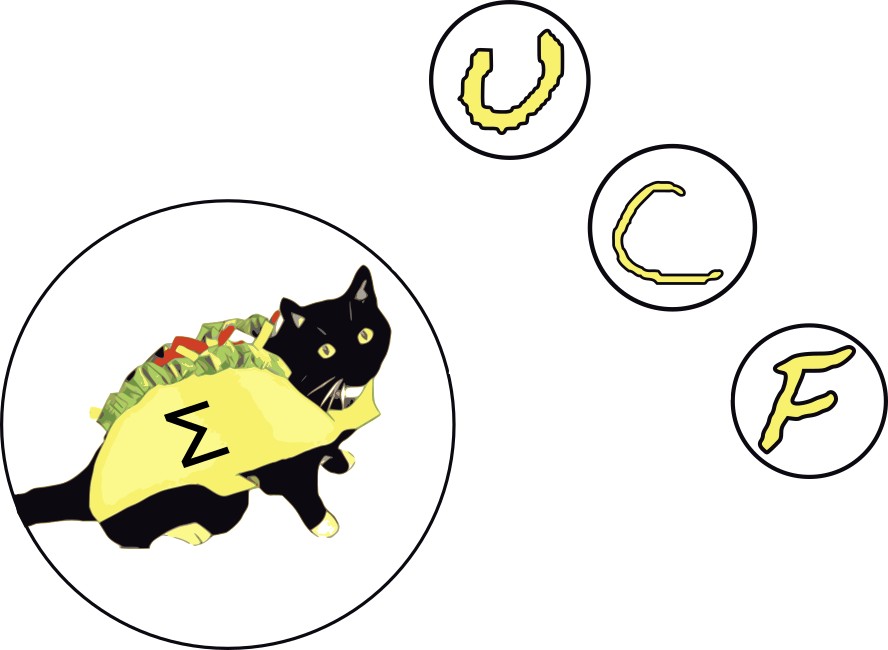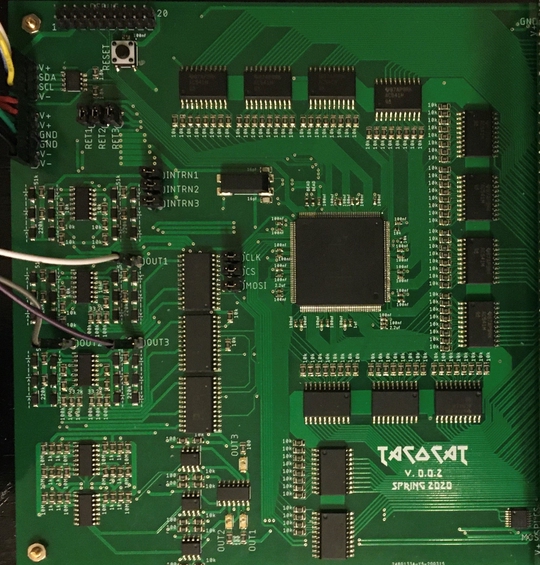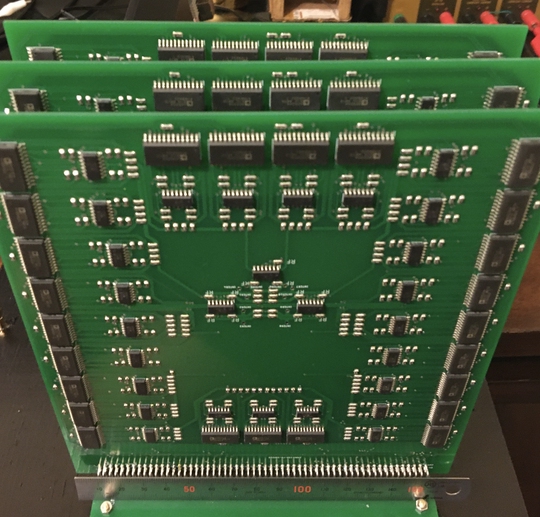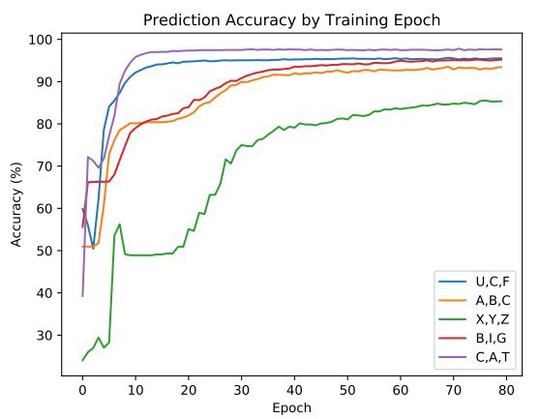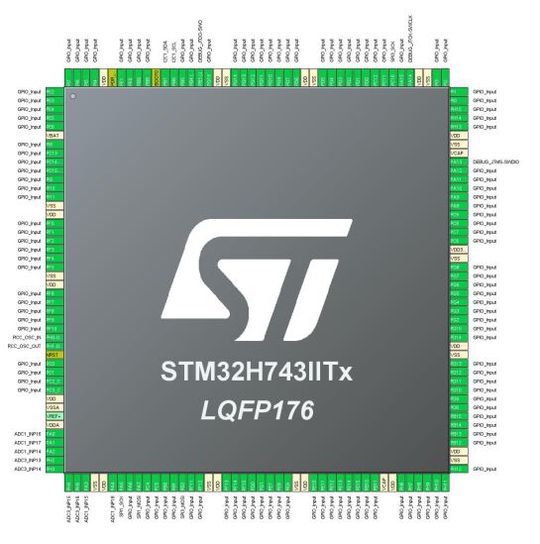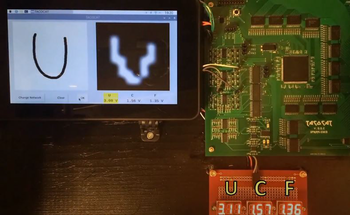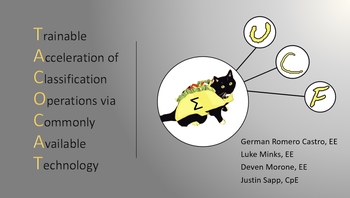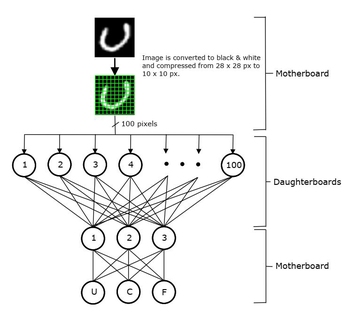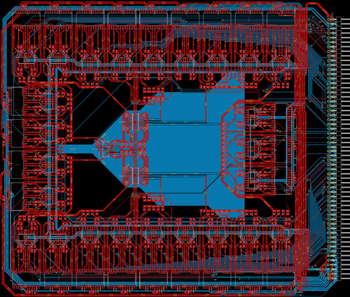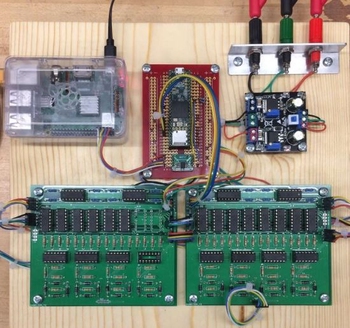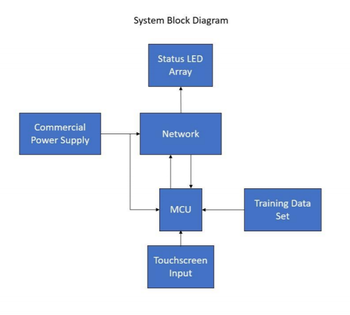TACOCAT:
Trainable Acceleration of Classification Operations via Commonly Available Technology
Whitepaper Video Demonstration
TACOCAT is a hardware-based machine learning accelerator built from ordinary components. Its neural network can be trained to recognize any set of three handwritten characters. When tested with five different three-letter subsets of the alphabet, prediction accuracy test results ranged from 86 to 97%
